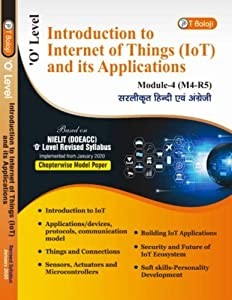Introduction to internet of things (IOT) and its Application
The Internet of Things (IoT) is a network of physical devices, vehicles, appliances, and other objects embedded with sensors, software, and connectivity which enables them to collect and exchange data. IoT is rapidly changing the way we interact with technology and the world around us. It is estimated that by 2025, there will be over 75 billion connected devices globally, creating a huge network of interconnected devices.
IoT applications can be found in almost every industry, from healthcare to agriculture, from manufacturing to transportation. Some of the key applications of IoT include:
Smart homes: Smart home technology uses IoT to control and automate various household appliances and systems such as lighting, heating, and security systems. These devices can be controlled remotely through a smartphone or tablet.
Industrial automation: IoT is used to automate various industrial processes such as manufacturing, logistics, and supply chain management. IoT sensors can monitor the condition of equipment, track inventory levels, and optimize production processes.
Healthcare: IoT is being used in healthcare to monitor patients remotely and to gather data on their health. Wearable devices such as smartwatches can track heart rate, blood pressure, and other vital signs, while sensors embedded in medication can ensure that patients take their medication on time.
Agriculture: IoT can be used in agriculture to monitor crop health, soil moisture levels, and weather conditions. This data can be used to optimize crop yields, reduce waste, and increase efficiency.
Smart cities: IoT can be used to monitor and manage various city services such as traffic, public transportation, and waste management. Sensors can monitor traffic flow and adjust traffic lights accordingly, while smart bins can optimize waste collection routes.


